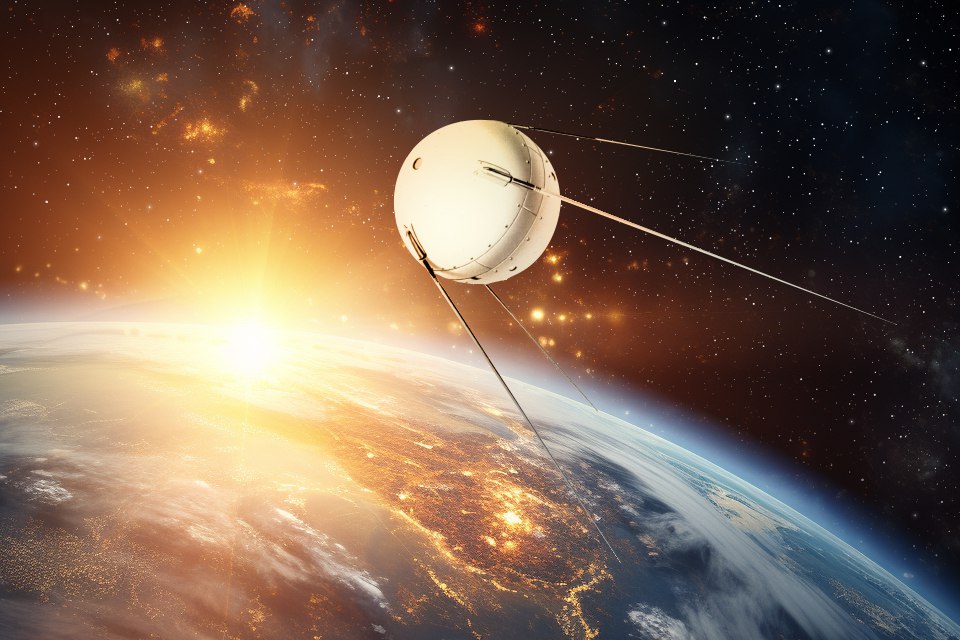On October 4, 1957, the first human-made satellite flew into space. However, there were several other spacecraft, each of which was doing something in orbit for the first time. And you probably haven’t heard anything about them. We decided to tell you about them.

1. What was the name of the first scientific satellite?
The answer to the question about the first launch of the scientific satellite may seem a little strange, but it was called Sputnik-1. The first spacecraft launched into near-Earth orbit was precisely a research one, despite the fact that of all the equipment on it, there was only a radio transmitter.
During its flight, it was tested to see how the radio station and other equipment, such as an automatic thermoregulation system, would work in space. In addition, scientists were interested in the passage of radio waves through the Earth’s ionosphere. Finally, even when the satellite descended from orbit, valuable data on the density of the outer layers of the atmosphere were collected.
2. How did the first call via satellite take place?
The first communication satellite was called SCORE (Signal Communications by Orbiting Relay Equipment). NASA launched it on December 18, 1958. The spacecraft was equipped with two radio signal transceivers.
SCORE could relay one telephone or 7 teletype channels. In addition, there was a recording of the greeting of US President Dwight Eisenhower on board, which was broadcast on the air. However, only very sensitive receivers could catch it. The satellite was in orbit for 34 days.
3. Which satellite first started broadcasting a TV signal?
Now, the transmission of video via satellite has become commonplace. But in the early 1960s, it was a miracle. The first to do this was the American satellite, Telstar. It was put into orbit on July 10, 1962, and already on July 23, a phone call, fax and TV program were transmitted through it.
Further, Telstar was used to broadcast European TV programs in the USA and American ones in Europe. It was in orbit until February 1963. After the completion of its operation, a whole series of similar spacecraft appeared.
4. What was the first military satellite tracking?
Theoretically, all the first artificial Earth satellites can be considered military. After all, both in the USSR and in the USA, they were developed “for the purpose” of military use. However, they were primarily exploratory. The military was also interested in the possibility of creating a spacecraft to spy on the enemy. In the USA, the corresponding program was called Corona, in the USSR — Zenit.
The first reconnaissance spacecraft that worked successfully enough in space can be considered the Discoverer 2, designed by the Americans. On April 13, 1959, it was launched into a polar orbit and transmitted data about its condition. It photographed the Earth’s surface on film, which was supposed to return to Earth in a special capsule, however, due to an error in the equipment, it was dropped in the wrong place, and it was lost in the ocean. So we don’t really know about the first object photographed from orbit.
5. When the first space telescope was launched
Many believe that the Hubble Space Telescope, launched in 1990, which still pleases us with bright images and new discoveries, is the first astronomical instrument outside the Earth’s atmosphere. But in fact, the program to create an orbital observatory began back in the 1960s.
The first attempt was the Orbiting Astronomical Observatory (OAO-1), launched on April 8, 1966. The first attempt was the Orbiting Astronomical Observatory (OAO-1), launched on April 8, 1966. However, on December 7, 1968, its successor, OAO-2, called Stargazer, was launched into orbit. Its main scientific load was four telescopes with a diameter of 30.5 cm and seven additional instruments that explored the sky mainly in the ultraviolet part of the spectrum. This satellite worked until February 1973.
Follow us on Twitter to get the most interesting space news in time
https://twitter.com/ust_magazine
